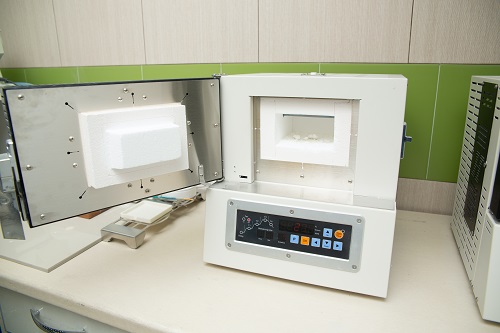Are You Over-Committing on Your EU MDR Post-Market Surveillance Plan?
All MedTech companies face increased post-market surveillance (PMS) requirements under the EU MDR and IVDR. A PMS plan will incorporate a Post-Market Clinical Follow-up (PMCF) plan or justification for why it is unnecessary.
Higher-risk devices and IVDs require a Periodic Safety Update Report (PSUR). While for lower-class devices, a Post-Market Surveillance Report (PMSR) will be required.
This future landscape requires MedTech companies to maximize their Post Market Surveillance by using real-world data to detect defects before recalls are necessary by using real-world data.
Some MedTech companies optimize their PMS approach by creating their evidence platforms, while others are still figuring it out. Unfortunately, most companies overcommit to PMCF, vigilance, event monitoring, and PSURs as part of their PMS plan. However, they need more time, resources, and money to follow their CER promises.
However, they need more time, resources, and money to follow their CER promises.
The key challenges with PMS:
- Identify the data that can aid their PMS efforts
- Generating new data promptly to support PMS
- Dedicating time and resources to PMS documentation
- Monitoring the use of medicines in everyday practice
- Carrying out risk-benefit analysis for medicines suggesting suitable actions.
- Providing regular updates to health care professionals and patients about the safety and effectiveness of medicines.
Post Market Surveillance And Its Role in Design

As discussed above, all medical companies should have an active PMS system in place. Unfortunately, many companies still doubt that this system is to capture complaints, but it is not.
Post Market Surveillance captures information about the device when placed in the market, whether good, bad, or ineffective.
It is, therefore, better to have three different roles in managing the whole PMS system.
These three roles are defined below:
The first position is for the CER writers who will look into your clinical writings and knowledge base for any device.
The second person is your marketing manager, who will collect all the information from the marketing staff, sales, and current market literature.
The third person responsible is your technical director, who will collect all quality-related information and material from the technical knowledge base.
So the design of any product depends on the above three strands to come out with one of the following design outcomes:
- New product
- Design modification
- No Change
This can only happen if you will discuss all three inputs related to your device.
MDR Vigilance – An Added Challenge

With the new vigilance reporting timelines under the MDR and IVDR, manufacturers must report incidents within 15 days rather than 30 days, which will worsen the aforementioned challenges.
Companies now have only 24-72 hours to address critical incidents, e.g., deaths from devices. With an automated system, it is easier to monitor this event quickly and efficiently teach.
Companies have access to vast amounts of real-world data collected through their devices or through registries they’ve implemented; this data is rarely put to good use!
Within a large number of MedTech companies today, PMS is spread out. Siloed departments manage product safety and patient vigilance data, including Quality Assurance or Regulatory Affairs.
However, some precious and useful information is available with departments outside QA/RA systems. For example, there might be issues in capturing, assessing, and trending information from user meetings, brand surveys, and social media.
Annex III of the MDR lists the following points for a successful PMS plan:
- First, a thorough examination of all activities implemented around the organization will, in turn, help identify the types and value of data. This data is taken from those activities concerning PMS.
- An ideal PMS system would take in both reactive data and combine it with proactive data. So manufacturers can submit all of the available data as one set. The reactive data covers vigilance reports, audits, complaints, and out-of-specification reports. The productive data will cover service reports, literature, social media, real-world evidence, and customer surveys.
- A set of processes, such as prioritization algorithms, to quickly and efficiently handle incoming data and events will help decide on necessary actions.
- Practical tools to trace and identify medical gadgets for which corrective measures might be required.
- Technologies and frameworks for executing corrective actions when required.
- Reference for methods to satisfy manufacturer’s commitments for PMS system, PMS plan, and PSUR.
Implementing a centralized approach and system that pulls PMS data from all available sources; for reporting and signal detection will enable Med-tech companies to stay ahead of safety trends and signals, thus, ensuring that their devices in the field are highly safe and effective for their customers.
Structure Of New MDR

The new MDR document is 174 pages long and more detailed than the MDD. In addition, there are 42 implementing acts and 12 delegating acts to modify/amend it.
The Active Implantable Medical Devices Directive (AIMD) is also integrated into the MDR. AIMD also has a lot of content that did not exist previously; besides that, a lot more content still needs to exist.
The new regulations are much more detailed and much longer than the previous MDD, which was 60 pages long, with more than 100 articles in 10 chapters, and 17 annexes (80 pages).
Section 522 Post Market Surveillance Requirements
FDA has established an automated tracking system that efficiently identifies the reporting status of active 522 Post Market Surveillance studies. The FDA says it’s trying to ensure those commitments are fulfilled promptly.
A device with more than one requirement imposed by 522 must meet any of these criteria: The device is a class II or class III with these criteria.
The device meets these criteria, and the manufacturer must meet these criteria to receive the required surveillance reports. Therefore, device manufacturers must ensure that the device meets the criteria.
What is a Post-Market Clinical Follow-up (PMCF)?
The post-market section of the Clinical Evaluation Report (CER) must include Post-market surveillance data and information.
The PMCF is the systematic collection of clinical data to answer important questions about the safety or performance of the medical device and update its clinical evaluation.
In addition, documentation of the findings of PMCF is a must in a PMCF evaluation report, which is a part of the Clinical Evaluation Report.
The PMCF evaluation report must discuss any regulatory action (such as recalls and notifications), incidents must be displayed in a table, and (serious) adverse events must be mentioned in detail (with a focus on the evaluation of whether an incident is device-related or not). The conclusions may also lead to an update of the risk management documents.
Post-market surveillance (PMS) is an important part of the regulatory framework for medical devices in Europe.
The Medical Device Regulation (MDR) emphasizes gathering clinical and safety-related data after the approval/CE certification process and market access.

Monitoring CE-marked products are crucial to identifying risks identified in the practical use of the product.
Through continuous and systematic post-market surveillance, manufacturers can ensure that medical devices are safe and have no uncontrolled risks, such as defects or undetected security problems.
Manufacturers must ensure they are safe when using medical devices, as some risks only become apparent when used and stored.
What are the PMS requirements imposed by applicable QMS and risk management standards?
EN ISO 13485:2016 and EN ISO 14971:2012 are already obligatory as the standards are blended for the Medical Device Directive.
The PMS requirements in the post-market phase do not focus on reporting obligations. Still, they aim to consider PMS data to review the probabilities and estimate the severity of possible damages. As a result, the risks will fully recognize, and if presumed risk acceptance criteria, benefit-risk ratios are valid.
Collecting information through the feedback process needs to consider as input for risk management.
Minimum requirements for a PMS Plan according to Annex III (MDR 2017/745)
- Information from PSUR’s
- Serious incidents
- Field safety corrective actions
- Data on undesirable side-effects
- Trend reporting
- Inputs referring to non-serious incidents
- Literature, registers, and or databases
- Feedbacks and complaints sources from users, distributors, and importers
- Publicly available resources on similar devices
